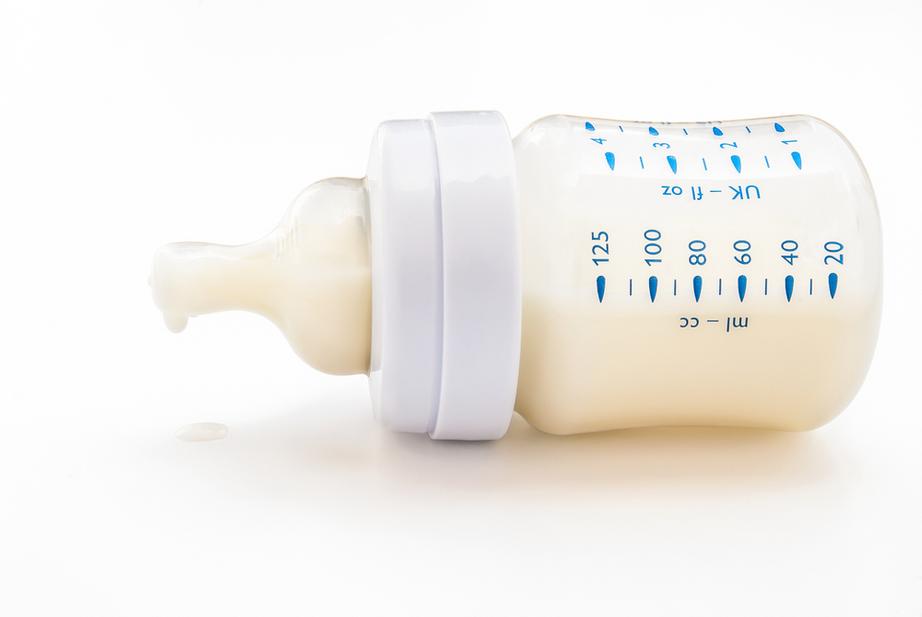Babies fed soy milk have changes in reproductive system
A longitudinal study led by Children’s Hospital of Philadelphia and the NIH found subtle, estrogen-like responses in infants fed soy formula versus breast milk, and apparently versus cows’ formula, too.
This is obviously important news for new and expectant mothers who may not be able to breastfeed. The American Academy of Pediatrics strongly recommends breastfeeding but soy is a commonly recommended alternative to breast milk because many babies cannot digest cow-milk formula.

Virginia A. Stallings, MD, director of the Nutrition Center at Children’s Hospital of Philadelphia (CHOP) said:
Soy formula contains high concentrations of plant-based estrogen-like compounds, and because this formula is the sole food source for many babies in the first six months of life, it’s important to understand the effects of exposure to such compounds during a critical period in development.
We love plant-based diets here at Natural Blaze, but we’ve never promoted soy, especially for its genetic engineering and obscene amounts of glyphosate, detectable in baby formulas.
While some plant-eaters promote soy as an alternative to dairy, pointing out that soy is much less estrogenic than dairy, there is an highly estrogen-like compound in soy called genistein. They are probably correct that plant estrogens do not compare to the hormones in animal secretions, however, lets not deny this estrogenic source commonly fed to newborns.
Like other estrogen-mimicking chemicals found in the environment, genistein can alter the body’s endocrine system and potentially interfere with normal hormonal development. In laboratory studies genistein causes abnormal reproductive development and function in rodents, but little is known about its effects on infants. (Source)
Of 410 infant-mother pairs enrolled, 283 pairs completed the study. Of those, 102 infants exclusively fed on soy formula, 111 on cow-milk formula, and 70 on breast milk. Approximately half of the babies were girls, and 70 percent of the infants were African American, born in the Philadelphia area between 2010 and 2013.
CHOP reports:
All of the infants were evaluated at CHOP, where researchers repeatedly performed measurements up to age 28 weeks in the boys and age 36 weeks in the girls. The study team assessed three sets of outcomes: a maturational index (MI) based on epithelial cells from the children’s urogenital tissue; ultrasound measurements of uterine, ovarian and testicular volume, as well as breast-buds; and hormone concentrations seen in blood tests.
“The main differences we found related to different feeding preferences were among the girls,” said Stallings. Compared to girls fed cow-milk formula, those fed soy formula had developmental trajectories consistent with responses to estrogen exposure. Vaginal cell MI was higher and uterine volume decreased more slowly in soy-fed girls, both of which suggest estrogen-like responses. The study team found similar patterns in differences between soy-fed girls and breastfed girls.
“We don’t know whether the effects we found have long-term consequences for health and development, but the question merits further study,” said Stallings.
Margaret A. Adgent, MSPH, PhD, said,
Modern soy formula has been used safely for decades. However, our observational study found subtle effects in estrogen-responsive tissues in soy-fed infants, and we don’t know if these differences are associated with long-term health effects.
It’s been suggested on medical websites for women with hormone problems (fibroids, endometriosis, etc) to forgo animal products due to the high amounts of hormones in them. Wouldn’t that apply to cows’ milk formula for babies, too?
It should be noted that this study was a short-term observational study. That means that over time the results of the three types of milk on the girls could change. In other words, over time, it could be that the effects of the hormones in cows’ milk could surpass that of soy – or not. As the researchers say, these discoveries need more testing.
We say, it’s long past time for a safer alternative to typical formulas for mothers or babies who cannot breast feed. They deserve the best!
DISCLAIMER: This article is not intended to provide medical advice, diagnosis or treatment.

